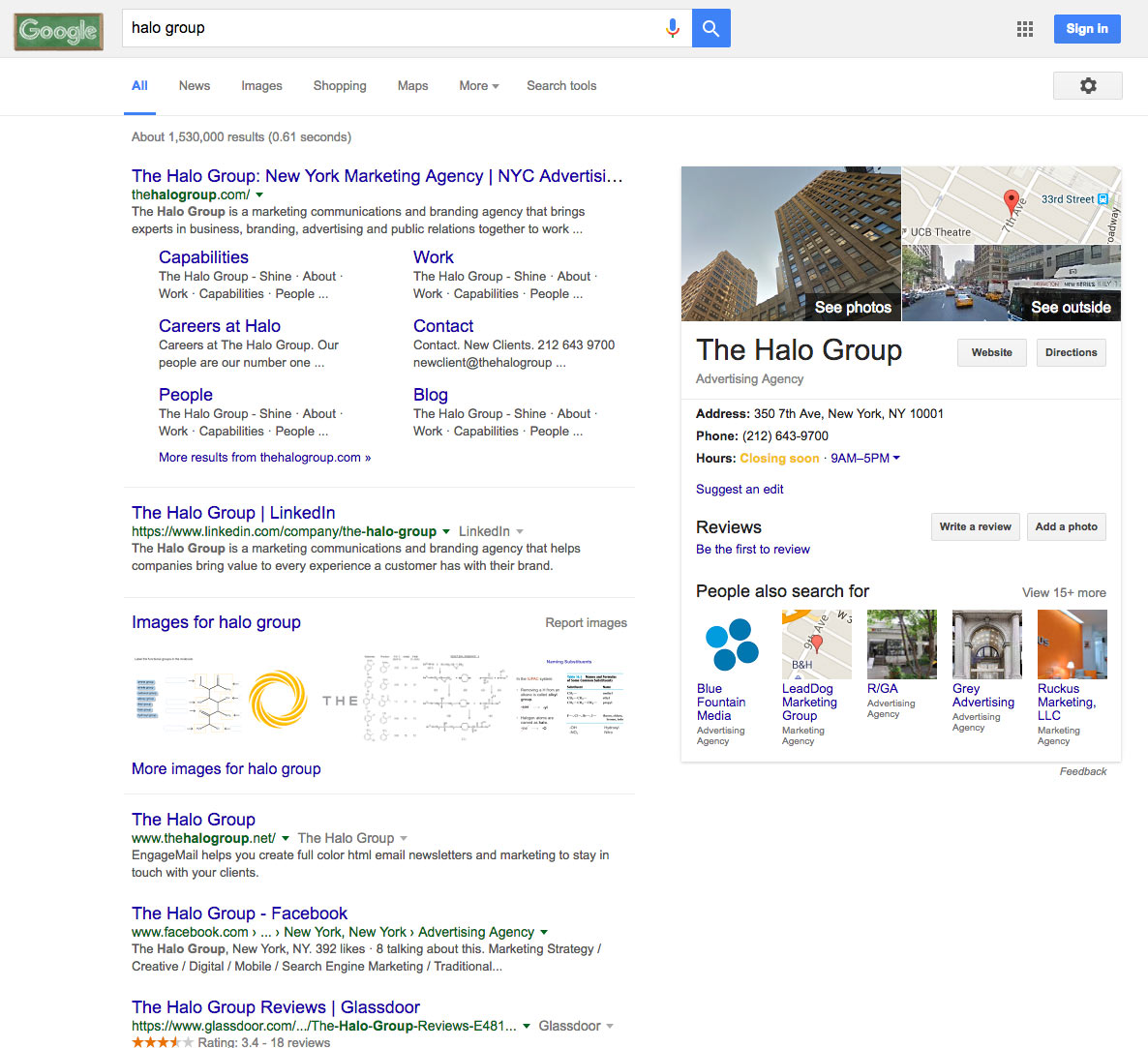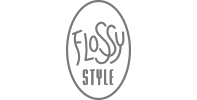Anatomy of a Google Search Engine Results Page (SERP)
-
 Brand Search
Brand Search
-
 Category Search
Category Search
-
 Product Related Search
Product Related Search
-
 Narrow Category Search
Narrow Category Search
-
 Direct Answers
Direct Answers

Brand Search
-
1 | Knowledge Graph Box
Created organically by Google My Business using content collected from various online informational sources, the Knowledge Graph Box is used by Google to display relevant information from trusted sources. Its content varies widely, but the idea is always this same – Google is very confident in the information’s veracity and relevance.
Tip: To keep the content of your Knowledge Graph Box updated, submit new graphics and information to sites like Google+, Wikipedia, Google My Business, Google Finance, Yahoo Finance, and MSN Money.
-
2 | Site Links
Content gathered by Google with links to website pages. This is based partially on your sitemap and on frequently visited pages on your site. In addition to the sitemap, website navigation, site traffic, and social media contribute to the content of the listing.
-
3 | Related Social Media Profile
Links to a brand’s most popular social media profiles often appear directly after the main brand website and sitelinks.
-
4 | People Also Search For
Content or sites that have been visited in similar searches.
Tip: Monitor this section to get an idea of the competitors in your field.
-
5 | Images
Images that match what Google’s Machine Vision Artificial Intelligence "thinks" the user is looking for. For a query like this, Google’s Artificial Intelligence has found the Halo Group logo and a few other items, some more logical than others.
-
6 | Organic Search Listing
The main listing of search results that match the query.
Category Search
-
1 | Paid Adwords (SEM, PPC)
An advertising placement where an advertiser pays Google when their ad is clicked. These ads are bid upon to gain best placement.
-
2 | “The Seven Pack”
Google will often surface as many as 7 map listings related to the search performed. Sometimes, up to 10 listings are shown, taking up the entire 1st page of results.
Product Related Search
-
1 | "Product Listings Ads" or PLAs
When Google determines that a search is less informational and more likely motivated to buy a product, ads paid for by merchants selling matching products will be displayed prominently.
-
2 | Organic Listing
Links to website pages that match the query. Overall website content and structure contributes to the content of the listing. In this case, we see that several online retailers are highly ranked organically, since their sites contain pages with titles and content about women’s shoes – and in many cases even blue women’s shoes.
Tip: Identify the keywords associated with your company and place them throughout your website. This will increase the chances of your brand appearing in the organic listing.
-
3 | Images
Images that match what Google’s Machine Vision Artificial Intelligence "thinks" the user is looking for. For a query as broad and unambiguous as this, Google’s Artificial Intelligence will have a very good idea of what to show here.
Narrow Category Search
-
1 | Carousel
When a category search is finite, sometimes Google will display results in a carousel. The carousel visually displays links to web pages that belong to members of a particular group (in this example, universities in New York). Clicking on one of the items will update the query accordingly, making it easy to browse organic results for each member of the group.
-
2 | Knowledge Graph Box
The Knowledge Graph Box in this example is displaying general information on New York City, since it is the key part of the query that the algorithm is using to understand what the user is probably looking for.
-
3 | Organic Results
Links to pages that provide contextually relevant information on the query, ordered by the Google algorithm’s estimated relevance.
Tip: Shorter URLs that read normally (example.com/about as opposed to example.com/?id=18967) perform better in organic results than longer ones, so keep that in mind when building your website. Reduce the number of slashes in your URL and include relevant keywords so that your site is more likely to be picked up organically.
Direct Answers
-
1 | Direct Answers
The direct answer to a query that can be interpreted as a question. This variant of the Knowledge Graph Box is displayed when Google’s algorithm is certain that it has understood the question, and it is something that can be answered unequivocally. This information is pulled from sources that Google has deemed to be highly trustworthy.
Tip: Try to ask Google questions about your company to see how well it knows your business. Queries like “Who is the CEO of [your company name here]?” will often be surprisingly accurate.





